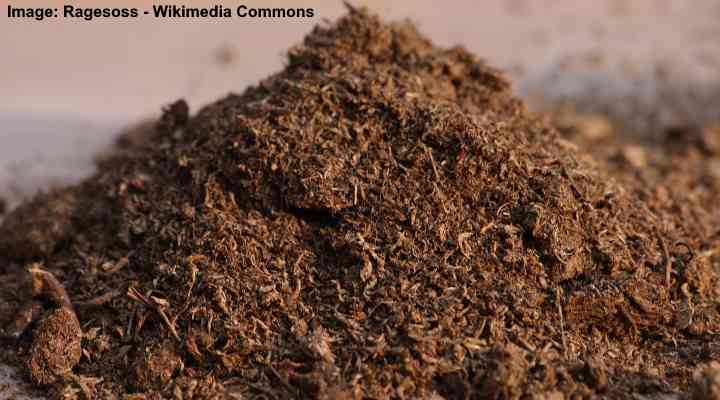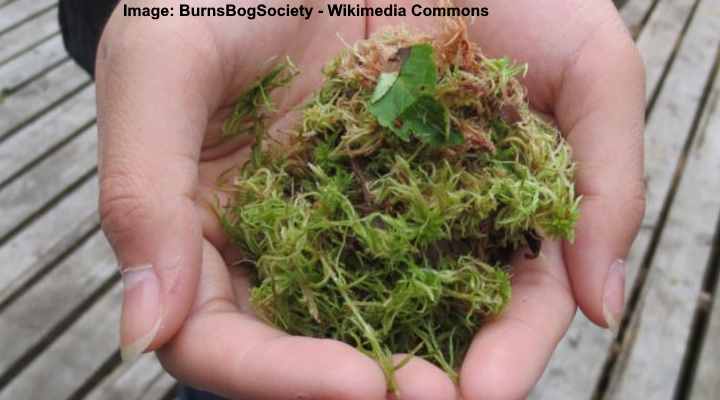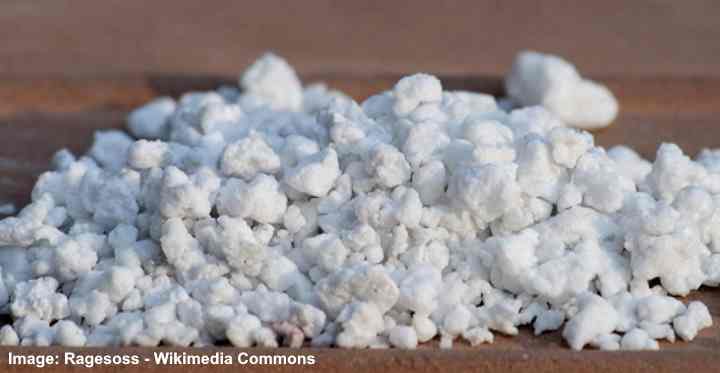Peat Moss (Sphagnum Peat Moss): Uses in Garden Soil, Benefits and More

Peat moss is a useful garden soil amendment or ingredient in potting soil. Gardeners use peat moss to increase soil moisture retention, aerate the soil, retain nutrients, and prevent soil compaction. Peat moss is also used to grow seeds, improve soil texture, and create various types of potting mixes.
How can you use this brown, fibrous material in your garden? What are the many advantages of adding peat moss to garden soil to grow beautiful plants and tasty vegetables? Are there any disadvantages to amending soil with peat moss?
This article is a definitive guide to using peat moss in garden soil.
What is Peat Moss?

Peat moss
Peat moss is decomposed plant matter—mainly moss or sphagnum moss—that forms in peat bogs. The organic matter gradually breaks down in the ground. Once it’s fully decomposed, it creates a type of soil called peat. Peat moss looks like a dark brown, fibrous material with a crumbly texture.
What is Peat Moss Made of?

Sphagnum moss
Most peat moss for use in garden soil comes from sphagnum moss. Often called sphagnum peat moss, the plant breaks down over thousands of years when it’s submerged in water. To make peat moss, the bog is dried out, and the peat moss is extracted from the ground.
The process of “making” peat moss continues by drying the harvested peat, screening it and then compressing for sale in local garden stores.

Peat harvesting
Most of the peat moss used for soil amendments comes from Canada. Although many consider peat moss as a non-renewable product, the peat is harvested using sustainable methods to conserve the peat bog. Some researchers say that, after harvesting, a peat moss bog can return to a balanced eco-system within five to twenty years.
Uses of Peat Moss
Peat moss is used to amend garden soil to improve its texture, prevent moisture loss, and lighten clay soils. Additionally, peat moss is used for starting seeds because it’s sterile and retains water and nutrients. Peat moss is also used in creating potting mixes for various types of houseplants.
Here is more information about how to use peat moss.
Peat moss is useful as a soil amendment
The most common use for sphagnum peat moss is to amend garden soil. By adding peat moss to heavy clay soil, you can improve drainage and soil texture. Mixing peat moss in sandy soil helps to improve moisture retention and prevent nutrients from leaching out.
Sandy soil in the garden can make it challenging to grow various shrubs, bushes, and flowering plants. Water tends to drain quickly from sandy soil, taking away essential nutrients with it. Working in peat moss to sandy soil prevents loamy garden soil from being too infertile.
Clay soil becomes easily compacted. Hard, packed earth makes it difficult for roots to grow and absorb nutrients. Also, it can be difficult for water to penetrate compacted clay soil. Working in peat moss to clay soil helps to prevent soil compaction and allows for better drainage.
Use peat moss for starting seeds
Peat moss can be used alone or mixed with other ingredients as a growing medium for germinating seeds. Peat moss creates aerated soil, allowing seeds to sprout quickly and take root. You can make your own seed starting mix by combining peat moss and perlite or vermiculite. Or, you can buy a commercial seed starting mix that contains peat moss.
Use peat moss to make garden soil more acidic
Peat moss can increase the soil’s acidity levels. If the soil has a high pH level, you can make it more acidic by adding peat moss which has a pH level of 4.4. Some plants, such as rhododendrons, hydrangeas, and camellias grow better in acidic soil. Because peat moss doesn’t break down in the soil, one application will last for a few years.
If you want the benefits of peat moss without increasing soil acidity, then you should amend garden soil with lime to balance the pH levels.
Use peat moss for houseplant potting mix
Peat moss is a standard addition for DIY homemade potting mix recipes. Typical houseplant soil can be too dense for potted plants. Adding equal parts of peat moss, potting soil, and perlite helps create the ideal growing environment for many houseplants.
Using peat moss and perlite to amend potting soil ensures that water drains faster. Light organic matter such as peat moss retains just enough moisture to keep roots hydrated without becoming overly soggy or wet.
To use peat moss as a potting soil amendment, make sure it only makes up one-third to two-thirds of the potting mix volume.
How to Use Peat Moss in the Garden
Adding peat moss to the soil in the garden is a vital soil amendment. Suppose your soil is too alkaline, heavily compacted, or too loamy to retain water, peat moss is the “go-to” ingredient if you need to improve soil water and nutrient retention, increase soil acidity, and loosen compacted soil.
Here is how to use peat moss to improve garden soil:
To make soil more acidic: To use peat moss to increase soil acidity, spread a layer of peat moss about 2” to 3” (5 – 7.5 cm) thick over the planting area. Using a shovel, work in the peat moss into the soil up to about 1 ft. (30 cm) deep. Thoroughly water the soil before adding plants.
To amend garden soil: To use peat moss to improve the texture of clay or sandy soil, spread a thick layer of sphagnum peat moss where you intend to plant flowers or shrubs. To avoid lowering the soil pH levels, sprinkle limestone on the peat moss. Work in the peat and limestone to a depth of 1 ft. (30 cm).
Advantages of Peat Moss
Gardeners use peat moss because it helps amend various types of soil. Because peat moss is relatively light, it is easy to work with, and peat moss is readily available in most garden centers or online stores.
Here are the advantages of using peat moss in soil:
Peat moss helps retain moisture in the soil
The water retention capacity of peat moss is the most common reason it’s popular in gardening. Amending sandy or rocky soil with peat moss allows plant roots to get enough moisture to grow well. The sphagnum peat releases moisture gradually, which is ideal for garden soil and a houseplant potting mix.
Peat moss helps retain nutrients in the soil
Peat moss helps to prevent nutrients from leaching out of the soil after heavy rainfall. Although peat moss doesn’t contain many nutrients, its water retention properties hold nutrients in the ground. This increases an essential growth factor in fertile soil called “cation exchange capacity” (CEC).
Peat moss doesn’t contain weed seeds or harmful bacteria
Another advantage of peat moss is that it doesn’t contain harmful microorganisms or weed seeds. This makes peat moss ideal for growing plants from seeds, where they are susceptible to bacteria or weeds in the growing environment. You can also use peat moss to amend garden soil without altering the soil’s nutrient profile and without introducing weed seeds.
Peat moss doesn’t compact or break down in the soil
A vital benefit of peat moss is that it prevents soil from becoming compacted. Regular garden soil—especially clay soil—compacts over time. This type of dense soil prevents water and air from getting to plant roots. Working in peat moss and other soil amendments resolves compaction issues and results in healthier plants.
Disadvantages of Peat Moss
Although peat moss has many uses as an excellent soil amendment, there are some disadvantages to it. In fact, some may say that some of the advantages of peat moss are also its disadvantages.
For example, peat moss lacks many nutrients. While it’s an excellent ingredient for amending soil, you will need to add compost or manure to “feed” the soil for healthy plant growth. Also, the low pH levels of peat moss can affect soil acidity levels, making it too acidic for some plants.
Then, there is also the cost. Peat moss is generally more expensive than compost, especially if you make your own garden compost.
Peat Moss vs. Sphagnum Moss
There can be confusion about the difference between peat moss and sphagnum moss. Sometimes you will see peat moss labeled as sphagnum peat moss.
Sphagnum moss is the living plant, however peat moss or sphagnum peat moss is the decayed organic plant matter at the bottom of the bog or wetland. Another difference is that sphagnum moss has neutral pH, unlike peat moss which is acidic.
Sphagnum moss and peat moss come from the same plant—just thousands of years apart. There are around 380 species of sphagnum moss that grow in clumps in wetlands or bogs.
As the sphagnum moss plants die and decay, they settle at the bottom of the bogs. Over many years, peat moss develops in natural bogs and wetlands where sphagnum moss grows.
Peat Moss vs. Coconut Coir
Coconut coir and peat moss are both effective soil amendments. Coconut coir is a fibrous organic matter that also holds moisture, lightens the soil, and improves soil structure. Coconut coir is more sustainable than peat moss, however peat moss has better water retention properties than coconut coir. Both Coconut coir and peat moss contain very few nutrients.
The discussion on which is best—peat moss or coconut coir—is to do with their origin.
Coconut coir is the stringy fiber that makes up coconut husks. This is a byproduct of the coconut industry and is continuously available. Coconut fiber has many uses, one of which is as a soil amendment.
Here are some comparisons of peat moss and coconut coir.
Sustainability—Coconut coir is viewed as more sustainable than peat moss. Although peat moss continues to renew, it can take up a long time to be available. On the other hand, one coconut palm tree can produce up to 75 coconuts a year.
pH levels—Coconut fiber has a pH range of 5.2 – 6.8. So, using coconut coir as an amendment doesn’t make the soil so acidic. However, if you need acidic soil, peat moss is better.
Water absorption—Both sphagnum peat moss and coconut coir have excellent water retention properties. However, peat moss is better in retaining water.
Cost—Cost is similar for both products.
Peat Moss vs. Compost

Compost
Compost isn’t the same as peat moss. Although both ingredients contain decayed organic matter, there are significant differences.
Compost is made much quicker than peat moss and can be made from everyday waste. Compost contains nutrients while peat moss hardly contains any nutrients. Unlike compost, peat moss doesn’t disintegrate in the soil. Unlike peat moss, compost may contain weed seeds. Unlike peat moss, compost is pH neutral and contains microorganisms.
Peat Moss vs. Mulch

Mulch can be organic, such as wood chips (left) or inorganic such as the vast majority of rocks (right)
You shouldn’t use peat moss as mulch. Mulch is organic or inorganic material—wood chips, compost, pebbles—to help lock in moisture to the ground, insulate plant roots and keep weeds at bay. However, peat moss tends to absorb moisture from the soil, and its light texture means it can easily blow away.
Peat Moss vs. Perlite

Perlite
Perlite is a volcanic mineral that is used in addition to peat moss as a soil amendment and has a neutral pH level. Perlite improves soil drainage in gardens and potting soil. Perlite is also highly porous and holds small amounts of water. Amending soil with peat moss helps keep the soil moist and release moisture when the plant needs it.
The ideal ratio of peat moss to perlite depends on the type of potting mix you want to achieve. For example, for succulents or cacti that need well-draining soil you can mix 1/3 peat moss, bark chips or compost (organic matter) with 2/3 of sand, perlite, pumice or other inorganic matter. However for an all-purpose potting soil recipe you can increase the amount of peat moss and organic matter.
Does Peat Moss Break Down?
Peat moss doesn’t break down in the soil. After all, it’s already taken many years to break down, so it won’t break down much more. So, amending garden soil with peat moss is usually effective for many years. This means that, although peat moss is more expensive than other soil amendments, it can work out cheaper in the long run.
Peat Moss Alternatives
Peat moss is a useful soil amendment that has been used in gardens for many years. When mixed in with garden soil, peat moss provides aeration, improves soil structure, and helps prevent nutrient runoff.
Even though there are colossal peat moss reserves, some people are concerned about the environmental impact of harvesting peat. In fact, some countries have banned peat moss harvesting due to concerns about its sustainability.
Here are some of the best alternatives to using peat moss:
Coconut coir—One of the best peat moss alternatives is coconut fibers. The fibrous husks of coconuts are waste products from processing coconuts. This sustainable substance is so similar to peat moss that it’s also called coconut peat.
Compost— Compost is also a suitable soil amendment to improve drainage and enhance the soil’s nutrient profile. Making compost is easy at home, and it is cheap to buy. The disadvantage of compost is that—unlike peat moss—it breaks down and requires replenishing every year.
Wood materials—You can also improve drainage and aerate the soil by working in wood chips, composted bark, or sawdust. However, wood products make the soil acidic, may be treated with chemicals, or be from non-sustainable sources.
Where to Buy Peat Moss
You can buy peat moss in garden centers, DIY stores, and online. For example, peat moss is for sale in bulk on Amazon, such as this one, where you can choose from many types of peat moss and various sizes.
Related articles:
